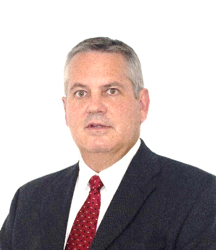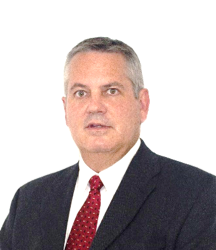Steel Mills

Lowrey: It’s a Great Time To Be in the Steel Industry
Written by Paul Lowrey
May 18, 2022
Editor’s note: Paul Lowrey did a presentation at the Tampa Steel Conference in February 2022 covering a range of industry issues. It was well received by the audience. and SMU asked him to do it again at Steel Summit 2022 with updates. This is an excerpt of his anticipated presentation.
I’m approaching 30 years in the steel industry, and a lot has happened over this time. The last few, however, have been the most interesting, and it seems that changes are occurring at a more rapid pace than ever. The industry is literally transforming itself across multiple dimensions. That’s what makes it so exciting. It’s hard to stay abreast of all the issues, but let me highlight a few.
 We have experienced a series of disrupting events, not just recently, but over the last twenty years. On the demand side, it includes 9/11, the great financial crisis, offshoring of manufacturing, three energy booms and busts, Covid-19, and recent supply chain issues. On the supply side, it includes Section 201, Section 232, the AD/CVDs of 2016, consolidation, rationalization, and recent geopolitical events. Here’s the important point. These industry disruptions are frequent and have made forecasting demand and prices of raw materials and finished products extremely difficult if not impossible. Ask yourself the question, how many of the price forecasts over the last two years have held up? How many have even been close? This situation is likely to continue as future events continue to unfold.
We have experienced a series of disrupting events, not just recently, but over the last twenty years. On the demand side, it includes 9/11, the great financial crisis, offshoring of manufacturing, three energy booms and busts, Covid-19, and recent supply chain issues. On the supply side, it includes Section 201, Section 232, the AD/CVDs of 2016, consolidation, rationalization, and recent geopolitical events. Here’s the important point. These industry disruptions are frequent and have made forecasting demand and prices of raw materials and finished products extremely difficult if not impossible. Ask yourself the question, how many of the price forecasts over the last two years have held up? How many have even been close? This situation is likely to continue as future events continue to unfold.
The next topic is everyone’s favorite – new capacity. I have been outspoken on this issue and will reiterate my position. The sensationalized headlines always talk about new capacity additions and rarely address old capacity rationalization. They have offset each other since 2000. Domestic hot strip mill capacity in 2025 will include the following 2022 additions: SDI in Sinton, Texas; Nucor Gallatin in Ghent, Ky.; North Star BlueScope in Delta, Ohio. It will also include these 2024/25 additions: U.S. Steel’s doubling the capacity of Big River Steel in Osceola, Ark., and Nucor new mill in Apple Grove, W.Va. Even with all that additional capacity, we’re still 3.0 million tons lower than in 2000. I call it the “Great Rationalization.” It’s all about replacement capacity – new technology replacing old, which is natural in a mature industry with aging facilities. Granted, the new capacity is coming at a time with no announced closures. Who’s to say that capacity rationalization won’t continue into the future as it has in the past?
Is prime scrap the next precious metal? Prime scrap is simply a by-product of manufacturing. The best example is an automotive stamping plant. The amount of domestic prime scrap generated is decreasing at the same time the demand for it is increasing from the new EAF flat rolled mills. Prime scrap has been decreasing for decades from the offshoring of manufacturing. Also, home scrap generated at steel mills (a form of prime scrap) is decreasing thanks to the better yields resulting from new technology. Some say that mills are hoarding prime scrap. If this is the case, why are the mills investing billions of dollars in it? This includes mill investments in pig iron, DRI/HBI, and acquisitions of scrap processors.
Environmental, Social, and Governance (ESG), including the decarbonization of steel, is a very fluid situation. It is beyond my area of expertise, but I will make a few comments. The US is the cleanest steel producer of any major producing country in the world. It is the result of our high degree of EAF steel production and scrap consumption. Furthermore, the steel industry only accounts for 1% of greenhouse gas emissions in the US compared to 15% for China and 7% for the world average. We should be rewarded and not punished for this. Let the rest of the world spend hundreds of billions of dollars to do what we have already done.
This is not your father’s steel industry anymore. Don’t look backward – the old industry structure and historical relationships no longer apply. Look forward – it’s a new industry with new challenges and opportunities.
By Paul Lowrey, President of Steel Research Associates, LLC
Note from John Packard: Paul Lowrey has spoken at a number of SMU Steel Summit Conferences, and most recently at the Tampa Steel Conference. His insights are unique, well-researched, and important for anyone who is buying or selling steel in North America. I anticipate his presentation at this year’s conference will be another one of many highlights for those attending. You can learn more about the 2022 SMU Steel Summit Conference including how to register by going to: https://events.crugroup.com/smusteelsummit/home If you have any questions please send them to: conferences@crugroup.com.
Paul Lowrey
Read more from Paul LowreyLatest in Steel Mills

Nucor names Batterbee, Bledsoe to HR roles
Nucor Corp. has promoted Thomas J. Batterbee to the position EVP of human resources and talent and appointed Elizabeth Bledsoe to the newly created position of president of human resources and talent.

Millett sees tariffs, CORE case benefiting SDI
Steel Dynamics' top exec thinks Trump’s tariff policies, as well as the results from the recent CORE case, will prove advantageous to the Fort Wayne, Ind.-based steelmaker and aluminum company.

USW digs in on opposition to USS-Nippon deal
“We remain deeply concerned about the national and economic security implications of the subject transaction,” the union stated in the letter dated April 21.

SDI’s Q1 earnings slump on-year, but up sequentially
SDI earnings slip in first quarter year over year, but are up sequentially.

POSCO inks MoU with Hyundai on Louisiana EAF mill
POSCO has signed a Memorandum of Understanding (MoU) with Hyundai Motor Group that includes an equity investment in Hyundai’s previously announced EAF mill set to be built in Louisiana.
